Calathea leaves are often large and colorfully patterned.
The leaves are often variegated with bright colors such as pink,
orange, red, and white. The underside of their leaves are frequently purple.
During the night,
the leaves fold up. In the morning,
the leaves unfurl in search of the morning sun.
This phenomenon, known as nyctinasty,
is made possible by a small joint the plant possesses between the stem and leaf,
called a pulvinus.
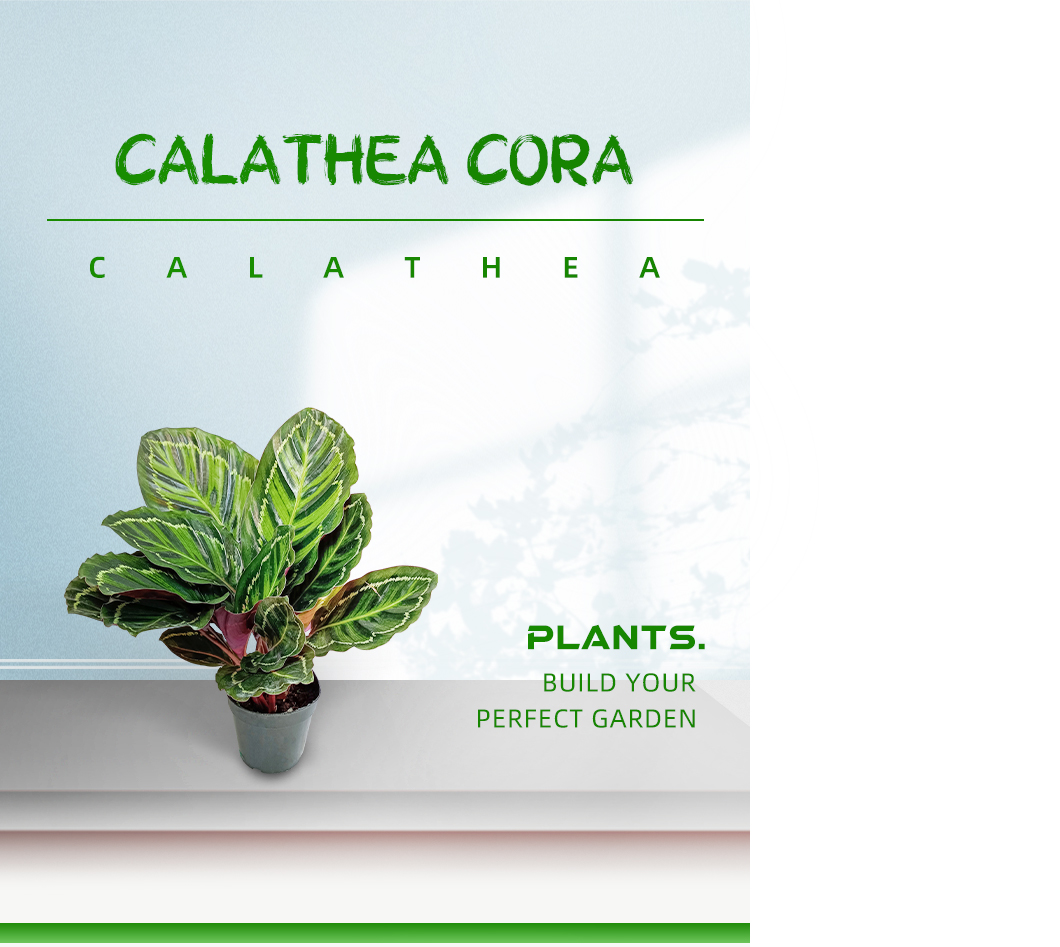
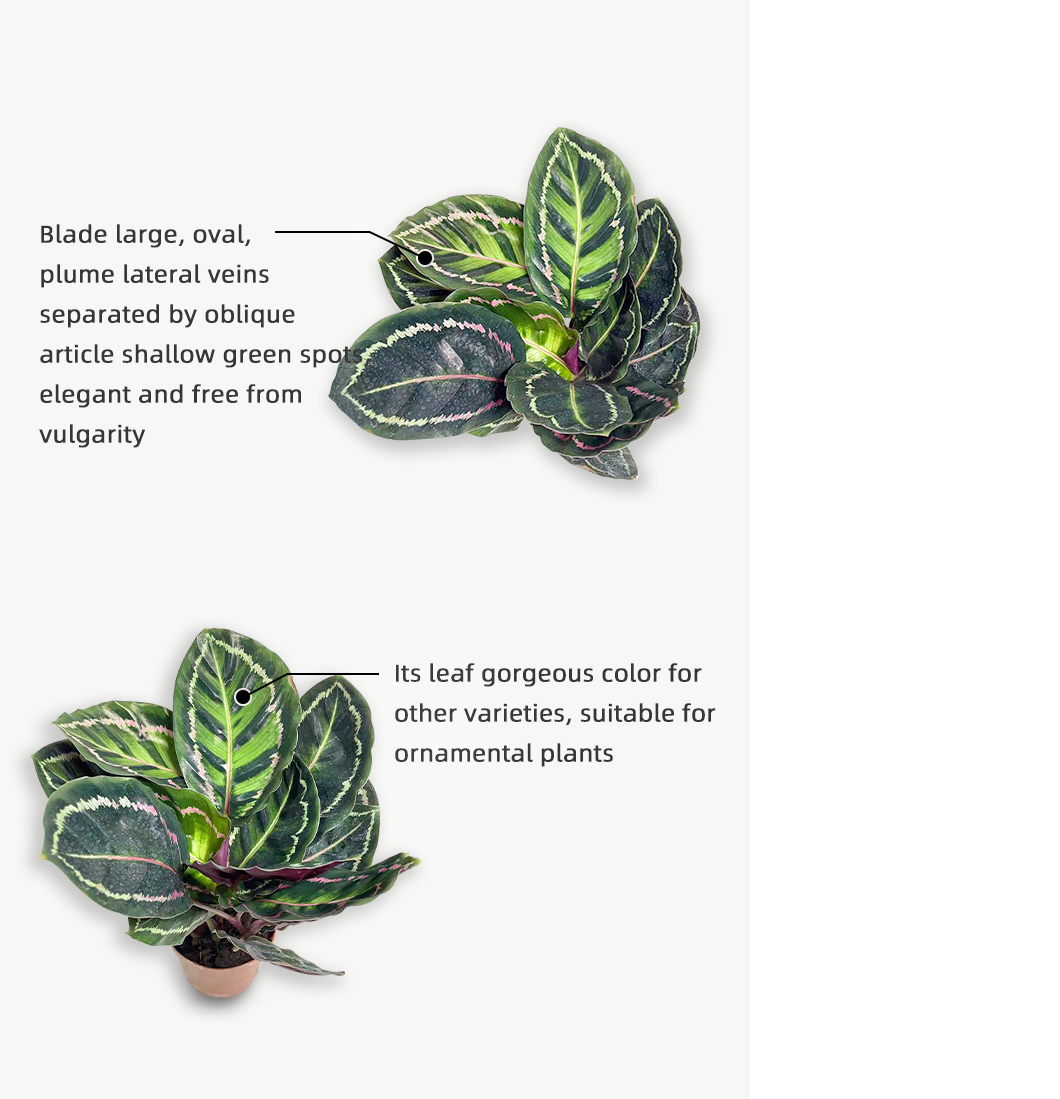
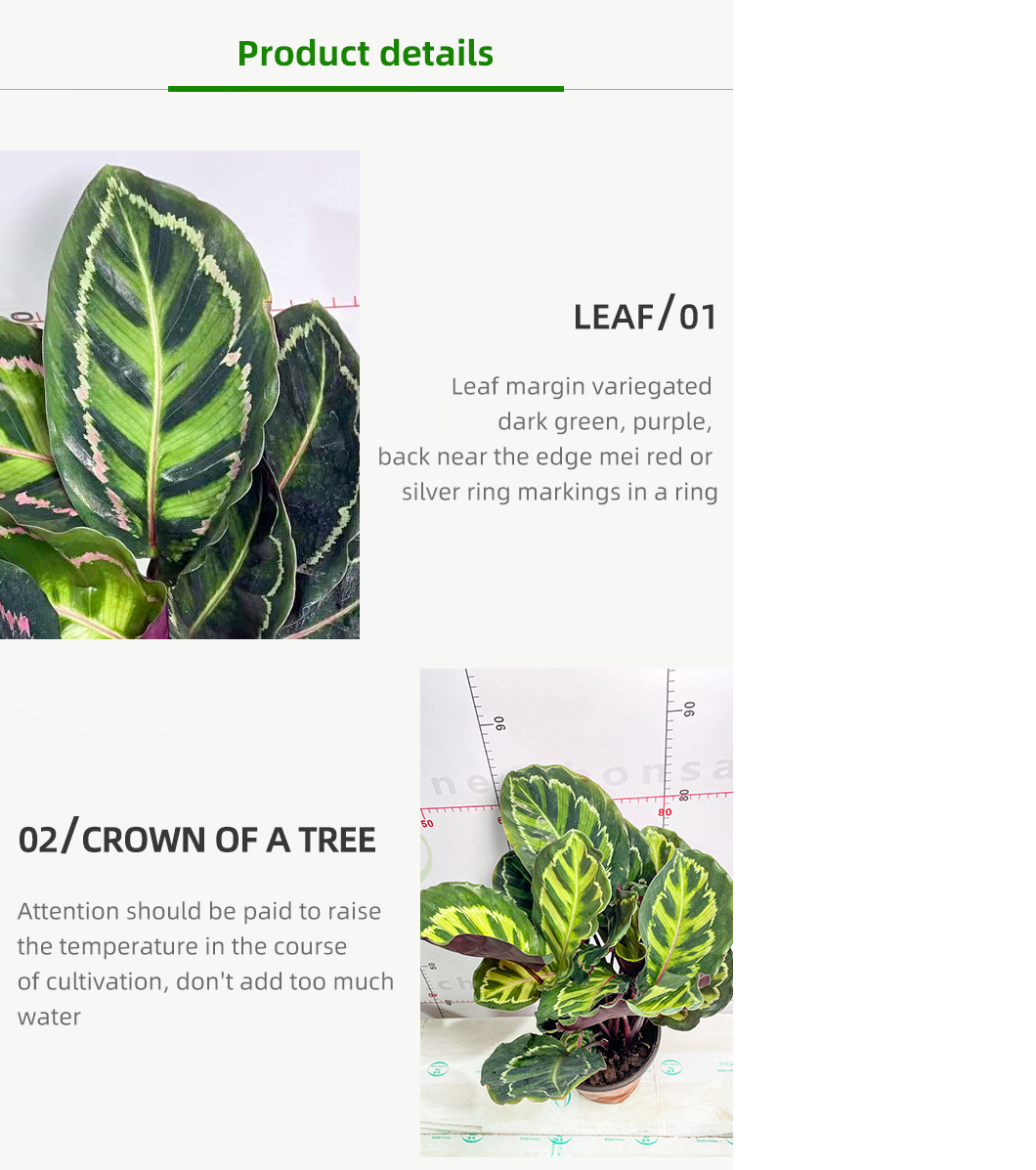
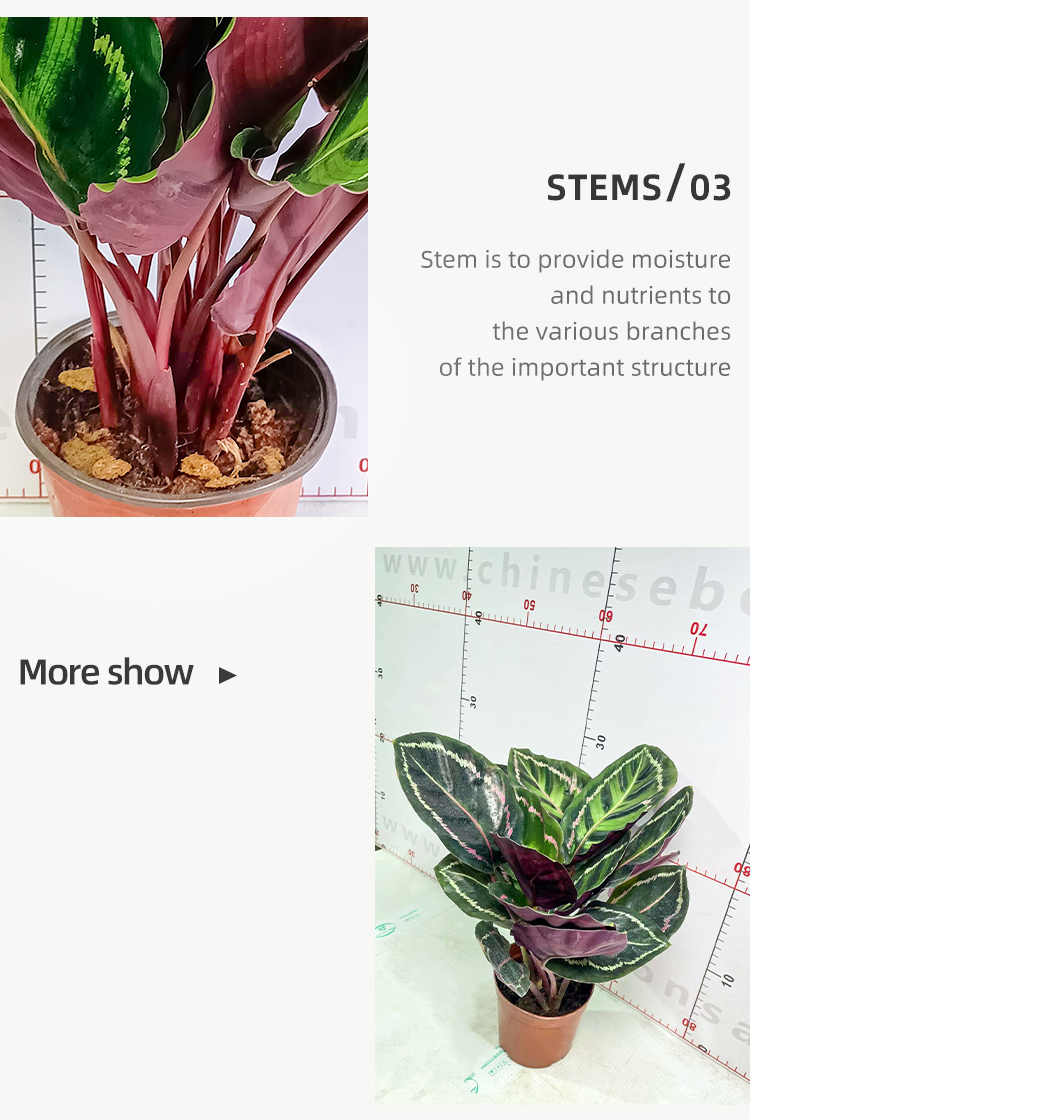
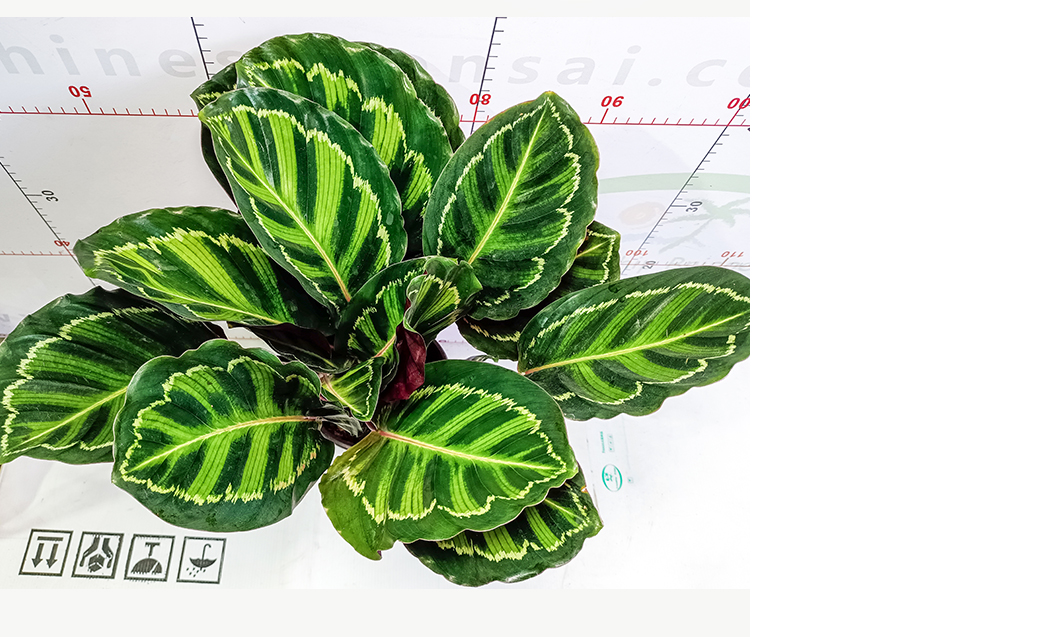


Calathea is a genus of flowering plants belonging to the family Marantaceae. They are commonly called calatheas or (like their relatives) prayer plants. About 200 species formerly assigned to Calathea are now in the genus Goeppertia. Calathea currently contains around 60 species. Native to the tropical Americas, many of the species are popular as pot plants due to their decorative leaves and, in some species, colorful inflorescences. The young leaves and bracts can retain pools of water called phytotelmata, that provide habitat for many invertebrates.
Foliage
Calathea leaves are often large and colorfully patterned. The leaves are often variegated with bright colors such as pink, orange, red, and white. The underside of their leaves are frequently purple. During the night, the leaves fold up. In the morning, the leaves unfurl in search of the morning sun. This phenomenon, known as nyctinasty, is made possible by a small joint the plant possesses between the stem and leaf, called a pulvinus.
Flowers
Calathea flowers can be yellow, purple, and white and bloom in the summer. The flowers have an asymmetrical structure with three petals and three free sepals. Calathea bracts are often more attractive than its flowers.
Cultivation
In ample conditions, calatheas can grow up to three feet in height with wide leaves. Though they are slow growers, once they reach their ultimate height they will stop growing.
Light
Like the shady floors of the tropical canopies, this genus prefers low to medium light. Too much direct sunlight can damage their fragile leaves. Signs of too much sun exposure may result in sunburn or dullness in the color of the leaves.
Temperature & Humidity
Along with low to indirect light preferences, these plants require high humidity to mimic their natural habitat . Some calatheas are placed in bathrooms, kitchens, and other areas with high-moisture levels.Calatheas prefer temperatures 60°F / 15°C and above to support healthy growth. These plants are also sensitive to cold air. The ideal temperatures range for these plants is 75°F / 23°C to 85°F / 29°C.
Water
Calatheas should be kept moist but not wet. Over or under watering these plants can lead to brown, dry leaves. Calathea are sensitive to minerals found in tap water such as chlorine and fluoride.
Growing medium
Ideal soil conditions for calatheas should be porous and well draining. Drainage is very important for calatheas due to root rot. A light porous soil and pot with a drainage hole will ensure the plant's delicate root system is not over-watered.Calatheas prefer the soil to be moist but not overwatered. The species also prefers an acidic soil pH.




